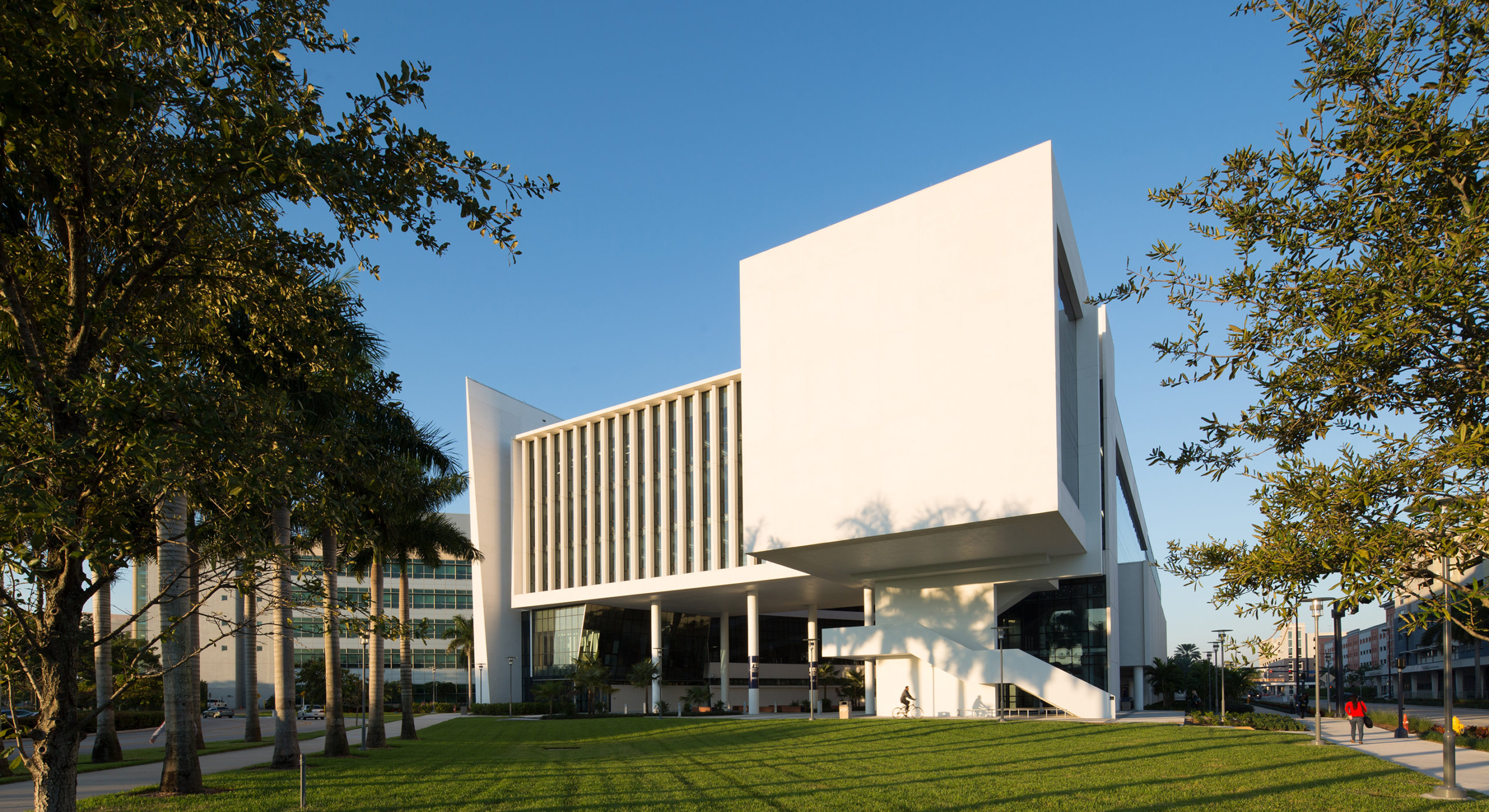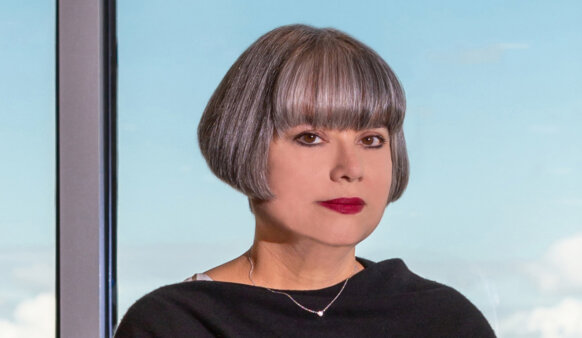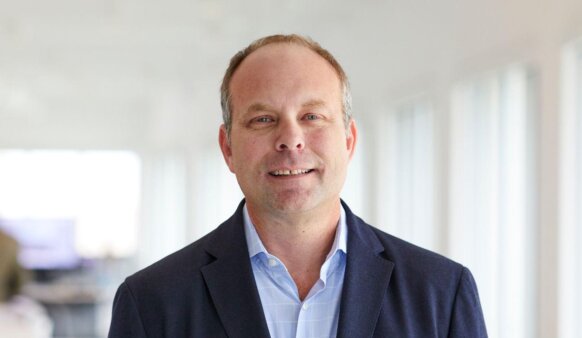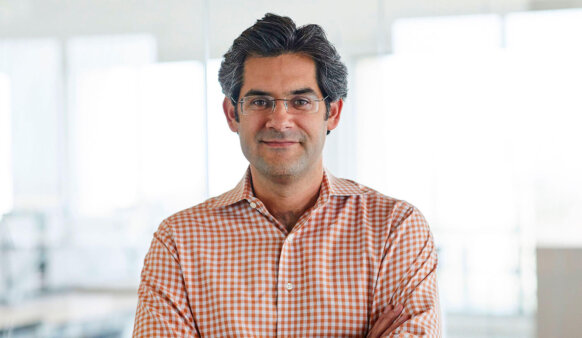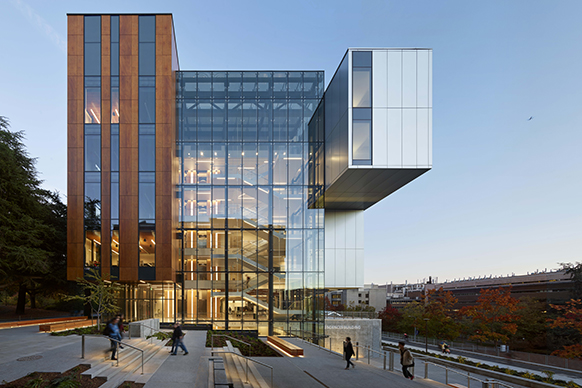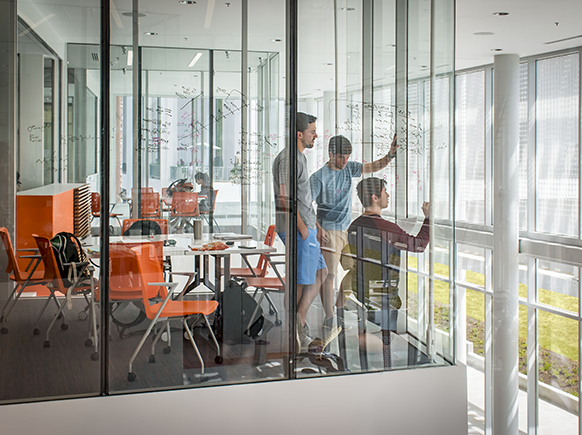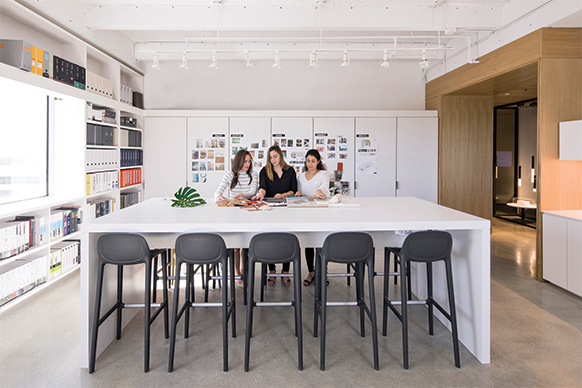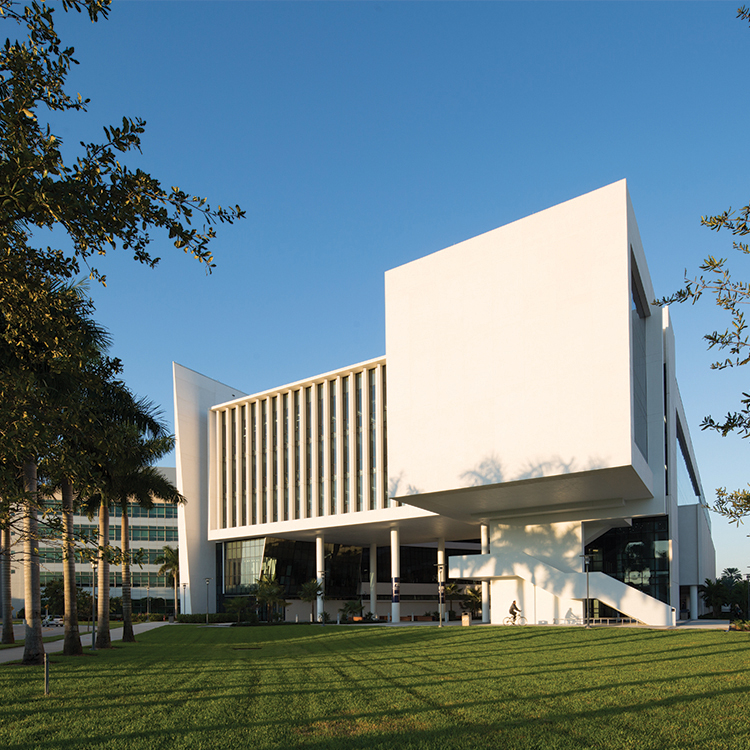
Florida International University Stempel Complex
The Stempel Complex at Florida International University (FIU) brings student and professional scientists together under one roof designed to withstand all of South Florida’s weather events, from tsunamis to hurricanes. This research lab and academic hub houses the College of Public Health and Social Work, Behavioral Health Research and Clinical Labs, and the International Hurricane Research Center, and is designed to keep students and faculty safe and dry for weeks—supplying power, fuel and stability for the plethora of scientists on call during a crisis.
An interdisciplinary community at its core, the scientists working in this building are tackling the multifaceted impacts of extreme weather events—not just the weather forecast, but the physical and emotional aspects of recovery. This unique team works side by side to predict and track storms more accurately, but also to improve counseling and psychological support for victims. This is a team that calls for a flexible and open-minded space so their vital research and service can seamlessly unfold.
The zig-zag detailing of the lab corridors adds a bold statement to the shared spaces, offering small enclaves for spontaneous conversation and collaboration. Complete with comfy armchairs and coffee tables, these spots invite students and researchers to talk through a new idea, compare notes, or just take a lunch break.
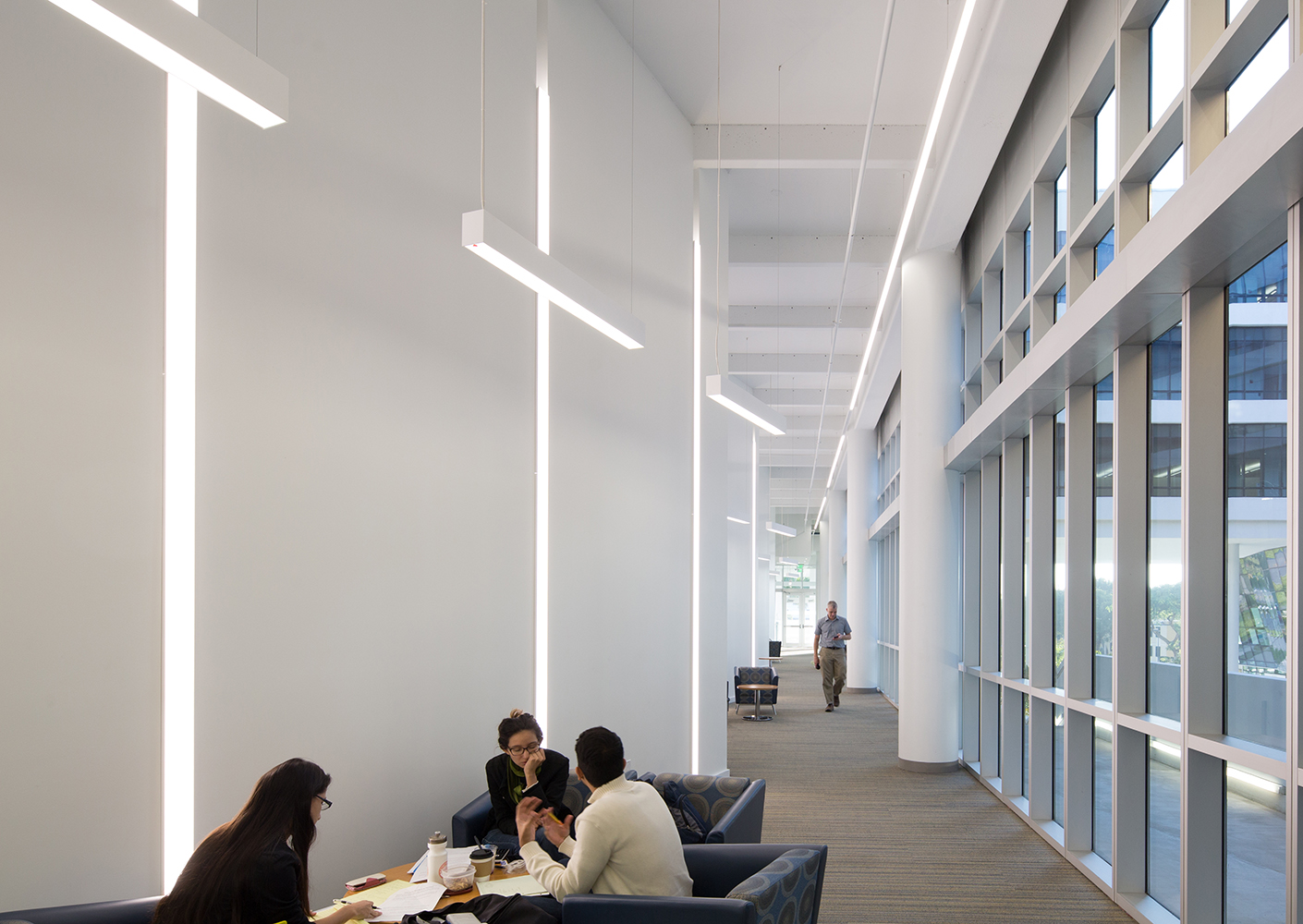
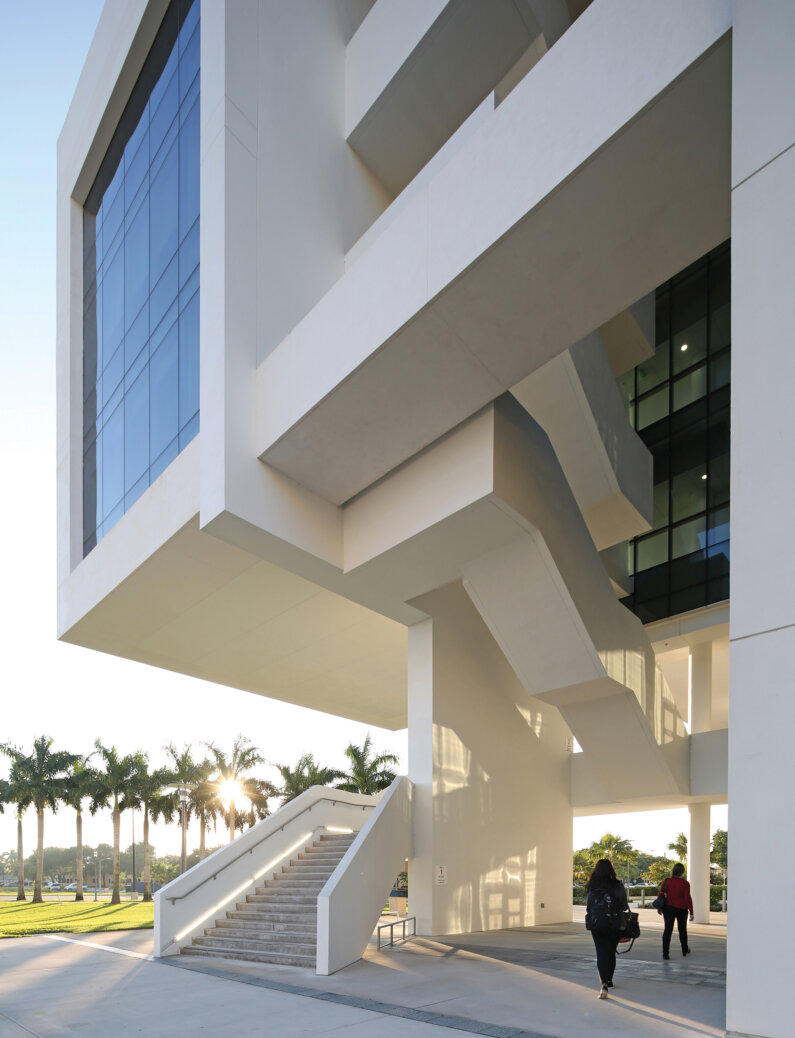
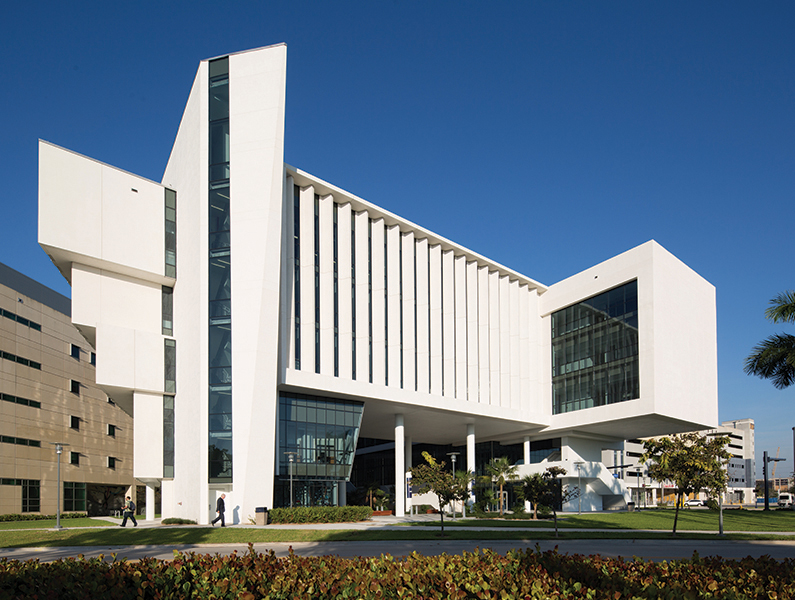
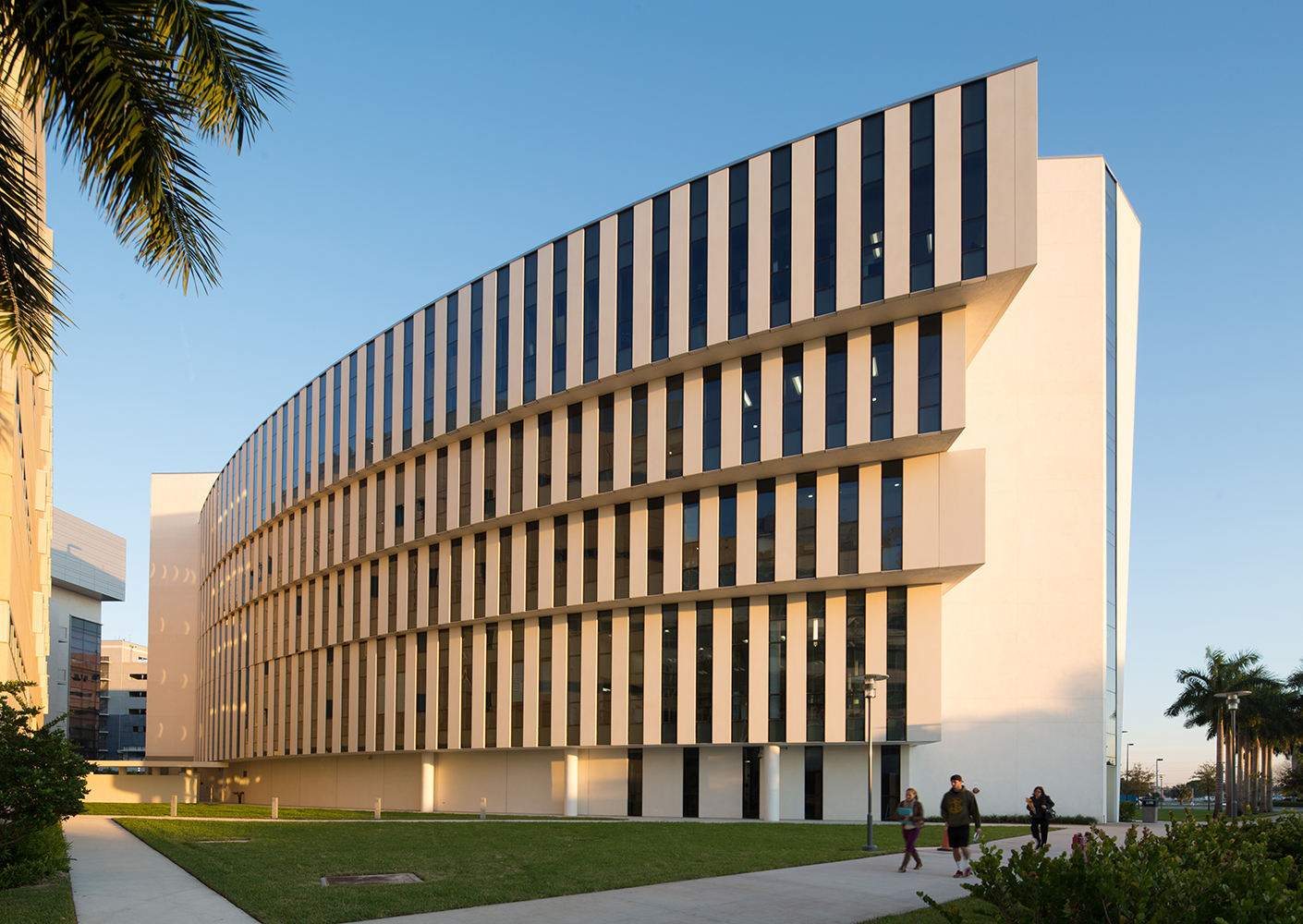
The entire complex is set at a customized angle to maximize student’s exposure to natural light. It also offsets the consequences of the Floridian sun—solar heat gain. By alternating panes of glass with angled walls of concrete, the Stempel Complex is equipped with its own solar shading fins, creating a passive air conditioning system that minimizes the building’s carbon footprint.
Jose Bofill
